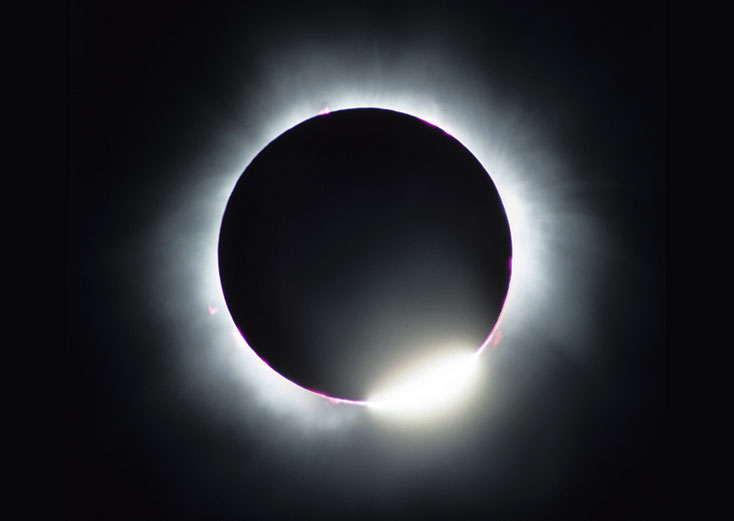Solar Eclipse Geometry
Posted on Categories Discover Magazine

On Aug. 21, the dark inner part of the moon’s shadow will sweep across the United States, creating a total solar eclipse for regions in 14 states. But, you may ask, the sun is so much larger than the moon, so how does this work? While our daytime star has a diameter about 400 times larger than that of the moon, it also lies roughly 400 times farther away. This means both disks appear to be the same size, so at certain times from certain locations, the moon can completely cover the sun.
Be sure to protect your eyes during the partial phases. The simplest way is to buy a pair of solar viewing glasses. Wear them even when 99 percent of the sun is covered because the remaining part is still intense enough to cause retinal burns. But remember: During the 2 minutes and 40 seconds of totality, remove any solar filters, or you’ll miss the most spectacular part of the eclipse.